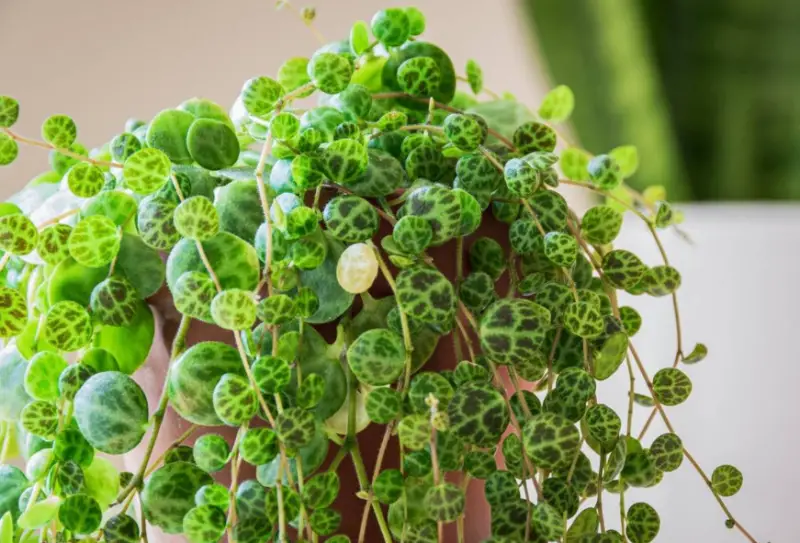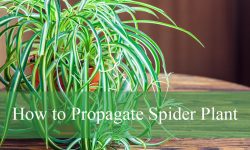Soil for String of Turtles Plant
When caring for the String of Turtles (Peperomia prostrata), it’s important to note that the typical succulent and cactus soil mixes are not suitable. These plants require a more organic, moisture-retentive medium. A soil mix rich in organic matter, particularly peat, works best for this plant. Peat not only helps retain moisture but also creates the slightly acidic environment that Peperomia prostrata prefers. A good option is a commercial seed starting mix, which is usually rich in peat and provides the right balance of drainage and moisture retention.
However, while peat-based soils are ideal, it’s important to monitor the soil’s pH, as peat can become too acidic over time. The plant thrives in slightly acidic to neutral pH, so testing the soil periodically can help ensure the pH level remains optimal. If the soil becomes too acidic, adjustments can be made by incorporating lime or other pH-balancing amendments.
Watering String of Turtles Plant
Once planted in a peaty, well-draining soil, the String of Turtles (Peperomia prostrata) is set up to retain the right amount of moisture needed to thrive. However, care must be taken with watering, as this plant is more prone to overwatering than to drying out. Native to the Brazilian rainforest, it prefers slightly moist conditions during the growing season (spring and summer). This can be achieved by keeping the soil consistently moist without becoming waterlogged.
To avoid overwatering, a good strategy is to thoroughly drench the soil until water runs out of the drainage holes at the bottom of the pot. This ensures the roots are well-hydrated without allowing water to pool. After watering, wait until the top inch of the soil has dried out before watering again. During the plant’s dormant period in fall and winter, switch to the succulent “soak and dry” method, where the soil is allowed to dry out more thoroughly between waterings. This cycle prevents the plant from sitting in overly damp soil during its resting phase and ensures it stays healthy year-round.
Temperature and Humidity for String of Turtles Plant
The String of Turtles (Peperomia prostrata) thrives in cooler, more humid environments compared to the warmer conditions many succulents prefer. Ideally, this plant should be kept in average room temperatures, typically ranging from 68°F to 75°F (20°C to 24°C). This temperature range mimics the subtropical climate of its native Brazilian habitat and ensures the plant remains healthy and vibrant.
Humidity is also crucial for Peperomia prostrata. Since it is a rainforest species, it prefers a more humid atmosphere than typical succulents. During dry summer months or when indoor heating is used in the winter, the air can become too dry for the plant. To maintain proper humidity levels, using a humidifier or lightly misting the plant can help, as long as care is taken not to leave the leaves wet for extended periods, which can lead to rot. Ensuring the right balance of temperature and humidity will promote optimal growth and prevent the plant from drying out or becoming stressed.
Fertilizer for String of Turtles Plant
Fertilizing the String of Turtles (Peperomia prostrata) is essential to maintain its vibrant, healthy appearance and keep the distinctive color and patterns of its leaves intact during the growing season. To support lush growth, feed the plant with a diluted houseplant fertilizer every two weeks during the spring and summer months when the plant is actively growing. A balanced, water-soluble fertilizer works well, but always dilute it to half strength to avoid overfeeding, which can harm the plant’s roots and delicate foliage.
It’s important to stop fertilizing during the fall and winter when the plant enters its dormant phase. During this period, the Peperomia prostrata doesn’t require the extra nutrients and could become stressed from over-fertilization.
Pruning String of Turtles Plant
Regular pruning of the String of Turtles (Peperomia prostrata) is essential to maintain its tidy, compact appearance and prevent it from becoming leggy or unkempt. Occasional trimming helps remove dead, damaged, or discolored stems and leaves, keeping the plant healthy and encouraging fresh, vigorous growth. By pruning, you can also control its size and shape, especially if it begins to grow in a direction or manner you don’t want.
Use sanitized scissors or sharp snips to ensure clean cuts and avoid introducing infections. Always disinfect your tools before pruning to prevent the spread of diseases between plants. After pruning, the plant will respond by producing new growth, leading to a fuller, more attractive appearance. Regular maintenance ensures your Peperomia prostrata remains lush and vibrant throughout the growing season.
Common Pests of String of Turtles Plant
The String of Turtles (Peperomia prostrata) is generally a hardy plant, but it can occasionally be affected by common houseplant pests. The most frequent culprits include mealybugs, spider mites, and fungus gnats.
Mealybugs appear as white, cotton-like masses on the plant’s leaves and stems. They suck the plant’s sap, leading to weakened, discolored foliage. Spider mites are tiny, often difficult to see, but their presence can be identified by fine webbing on the undersides of the leaves. These pests can cause the leaves to yellow and eventually fall off if left untreated. Fungus gnats are small, flying insects that thrive in overly moist soil. While the adult gnats are more of a nuisance, their larvae feed on the plant’s roots, which can lead to stunted growth.
To manage these pests, regular inspection is important. If an infestation occurs, treat the plant with insecticidal soap, neem oil, or wipe the leaves with alcohol-soaked cotton swabs. Ensuring proper air circulation, avoiding overwatering, and keeping the environment clean will also help prevent these pests from becoming a serious issue.
Propagating String of Turtles Plant
Propagating the String of Turtles (Peperomia prostrata) is a rewarding process that can be done easily through stem cuttings. To start, choose a healthy, mature stem with several leaves and make a clean cut just below a node using sanitized scissors or sharp snips. The node is the part of the stem from which leaves grow, and it is crucial for root development.
Once you have your cutting, remove the lower leaves, leaving only a few at the top to reduce moisture loss and encourage rooting. You can propagate the cutting in water or directly in soil. If you choose the water method, place the cutting in a jar with enough water to submerge the node but keep the leaves above the waterline. Change the water every few days to keep it fresh. Roots should start to develop in a few weeks.
For soil propagation, plant the cutting in a well-draining, moist potting mix, ideally one that is rich in organic material. Cover the pot with a plastic bag or place it in a humidity dome to retain moisture, ensuring it stays warm and humid. After a few weeks, the cutting should establish roots, which you can check by gently tugging on the stem. Once it has rooted well, you can care for it just like a mature plant. With patience and the right conditions, propagating the String of Turtles can lead to a flourishing new plant that adds to your collection.
Potting and Repotting String of Turtles Plant
Potting and repotting the String of Turtles (Peperomia prostrata) is essential for maintaining its health and encouraging growth. When selecting a pot, choose one that is slightly larger than the current container, ensuring it has good drainage holes to prevent excess moisture buildup. This plant prefers a well-draining, organic-rich soil mix, so a potting mix that contains peat, perlite, or orchid bark works best.
When potting, gently remove the plant from its current pot, taking care not to damage the delicate roots. If the roots are tightly bound or circling the pot, gently tease them apart to encourage outward growth. Place the plant in the new pot, filling in around the roots with the chosen soil mix and ensuring the crown of the plant sits just above the soil line. Lightly press the soil to eliminate air pockets, but avoid compacting it too tightly.
Repotting is generally recommended every 1 to 2 years or when the plant has outgrown its pot. Signs that it’s time to repot include roots emerging from the drainage holes or stunted growth despite adequate care. The best time to repot is in the spring when the plant is actively growing, as this will help minimize stress and promote faster recovery. After repotting the plant thoroughly to help settle the soil and provide hydration, avoid overwatering. Proper potting and repotting practices will ensure your String of Turtles remains healthy and continues to thrive.
Common Problems with String of Turtles Plant
While the String of Turtles (Peperomia prostrata) is generally a resilient plant, it can face several common problems that may affect its health and appearance. One of the most frequent issues is overwatering, which can lead to root rot. Symptoms include yellowing leaves, mushy stems, and a foul odor from the soil. To prevent this, ensure the pot has good drainage and allow the top inch of soil to dry out between waterings.
Underwatering is another issue that can occur, particularly if the plant is not given enough moisture during the growing season. Signs of underwatering include crispy, shriveled leaves and stunted growth. To remedy this, adjust your watering schedule to keep the soil slightly moist, especially during warmer months.
Pest infestations can also pose a threat, with mealybugs, spider mites, and fungus gnats being the most common offenders. Keep an eye out for visible pests or signs of damage, such as webbing or sticky residue. Regularly inspecting the plant and treating infestations promptly with insecticidal soap or neem oil can help maintain its health.
Finally, insufficient light can lead to leggy growth or a loss of the plant’s vibrant patterns, as it stretches towards the light source. If you notice this happening, consider moving the plant to a brighter location with indirect sunlight.








Tentative Correction:
Peperomia prostrata is not toxic to animals according to ASPCA (American Society for the Prevention of Cruelty to Animals). It should, therefore, be safe for cats and dogs, making it a pet-friendly option for houseplant enthusiasts.